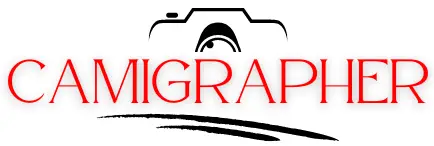EOS Utility offers a variety of ways to connect your Canon camera to your computer. The software offers a variety of features to help you manage and edit your photos, including support for RAW image files. If you are using a Canon EOS Rebel T6 or newer camera, here are five easy steps to connecting your camera to EOS Utility:
1. Launch EOS Utility on your computer.
2. Click the Camera Connections button.
3. Click the Add a New Connection button.
4. Select your Canon camera from the list.
5. Enter the password for your camera.
Contents
How to Download And Use Canon EOS Utility | Canon EOS Utility Software
[ytvideo]
Download and install the EOS Utility
- Download and install the EOS Utility from the Canon website.
2. Open the EOS Utility.
3. Connect your camera to your computer using the USB cable.
4. Select your camera from the list of devices.
5. Click on the Edit button.
6. Select the Media tab.
7. Under the Image Format section, select Canon JPEG.
8. Under the Image Quality section, select Fine.
9. Under the Image Size section, select 3200×1800 pixels.
10. Click on the Save button.
11. Click on the Exit button.
Connect the camera to the computer using the supplied USB cable
- Ensure that the canon camera is properly connected to the computer. The camera should be plugged into the computer via the supplied USB cable.
2. Launch the EOS Utility software.
3. Select the camera from the list of devices.
4. Click on the “File” menu and select “Import / Export.”
5. Click on the “Import” button and select the “Canon EOS Rebel T6 Digital Camera File.”
6. Click on the “Start” button and wait for the process to complete.
Turn on the camera
- On your computer, open the Canon Camera Utility.
2. In the Canon Camera Utility, click the “Menu” button and select “Setup”.
3. In the “Setup” menu, click the “Connection” tab.
4. In the “Connection” tab, click the “EOS Utility” button.
5. In the “EOS Utility” window, click the “OK” button.
6. In the “EOS Utility” window, the Canon Camera will be connected to the computer.
Select the camera connection mode
There are two ways to connect a Canon camera to an EOS Utility blog section. The first way is to connect the camera using the Canon EOS Utility software. This is the easiest way to connect the camera, but it may not be the most reliable way. The second way is to connect the camera using the Canon EF-S 18-55mm f/3.5-5.6 IS STM Lens. This is a more reliable way to connect the camera, but it may not be the easiest way.
Launch the EOS Utility
To open the EOS Utility, press the ESC button on your camera and select “Utilities” from the menu screen. There are a number of options available in the EOS Utility, but for this tutorial, we will focus on the “Camera Connection” tab.
Select “EOS Utility” from the camera’s main menu
Select “Camera Connection” from the EOS Utility
Select “EOS Utility” from the camera’s main menu
Select “Camera Connection” from the EOS Utility
On the “Camera Connection” tab, select “ canon camera” from the list of connected cameras.
On the “Camera Connection” tab, select “ canon camera” from the list of connected cameras.
On the “Camera Connection” tab, make sure that the “Type” selection is set to “EOS Rebel T5i” and the “Version” selection is set to “1.0.0”.
On the “Settings” tab, make sure that the “Date & Time”, “Language”, and “Remote Control” selections are set to the appropriate values.
On the “Settings” tab, make sure that the “Date & Time”, “Language”,
Conclusion
If you want to connect your Canon camera to your EOS utility, there are a few things you will need. The following is a list of what you will need and how to connect them:
1. A Canon EOS Utility software
2. A USB cable
3. A Canon camera
4. A PC or Mac
To connect your Canon camera to your EOS utility, follow these steps:
1. Download the Canon EOS Utility software.
2. Install the software on your PC or Mac.
3. Connect your Canon camera to your PC or Mac via the USB cable.
4. Open the Canon EOS Utility software.
5
